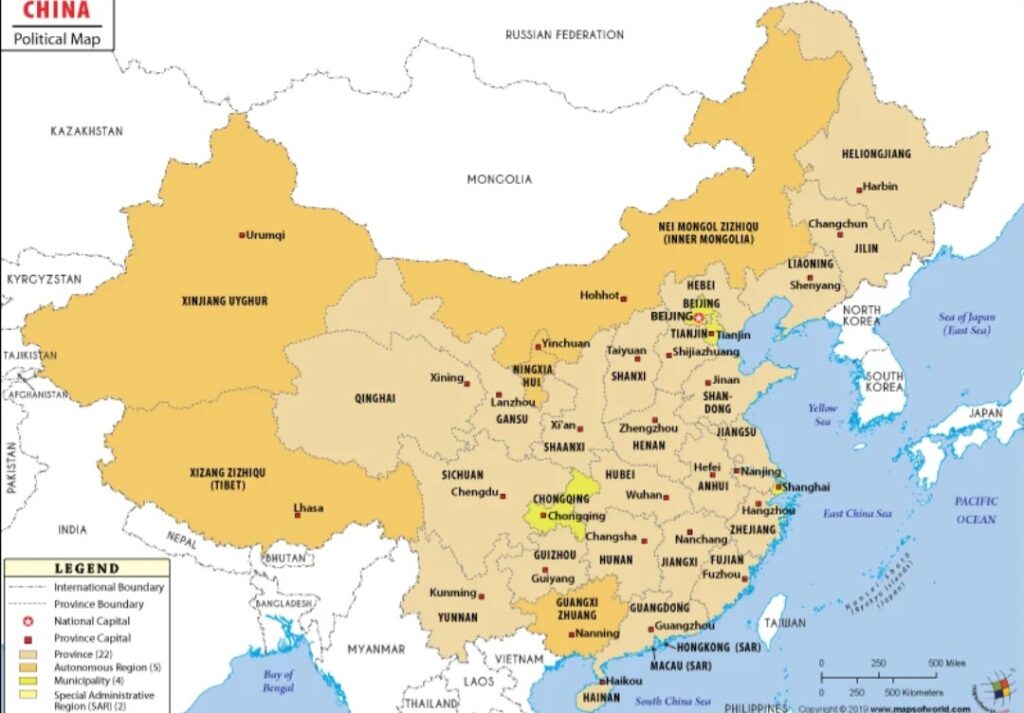By: Subhalakshmi Brahma

Beyond infrastructure and financing, China’s ascent in South Asia is the result of a calculated cognitive strategy that influences regional dependence, perceptions, and decision-making to its advantage. The Belt and Road Initiative serves as a psychological and strategic influence tool in addition to being an economic initiative. As it prepares its 15th Five Year Plan for (2026-2030), China emphasises energy security, domestic consumption, national security, and technical self-reliance, signalling a move away from rapid growth and towards “strategic endurance”. This illustrates how, in addition to its economic and military prowess, Beijing is increasingly depending on cognitive weapons of power to shape influence and perception.
From Economics to Psychology
China’s political system has historically associated ideological control with economic statecraft. Under Xi Jinping’s quest for centralisation, the Communist Party’s internal governance mechanisms treat cognition – the way that people, markets, and states think – as a realm of power. This idea is expanded upon by the BRI, which influences South Asia’s mental and physical environments.
There is subtle logic to it. In addition to promising growth, stability, and connection, China’s projects foster an attitude of inevitable modernisation in the region, with Beijing serving as its vital architect. Even hesitant or suspicious governments start using Beijing’s developmental grammar to frame their national objectives once this image becomes entrenched.
China creates a kind of strategic habituation – a mental alignment where smaller governments accept disparity as normal and advantageous – through infrastructure diplomacy, loan leverage, technical dependency, and media narratives. In this sense, cognition serves as the glue that holds China’s South Asia Play together – not by coercion, but by a shared understanding and belief in Beijing’s developmental logic.
The 15th Five Year Plan, Powered and Codified
The forthcoming 15th Five Year Plan for (2026-2030) represents a major shift in China’s foreign policy approach. This blueprint places more focus on national security, strategic self-sufficiency, and resilience in the face of the global uncertainty than earlier plans that were fixated on GDP targets.
Its fundamental idea is the “dual circulation” approach, which aims to retain a limited, controlled foreign engagement while bolstering home economic circulation. This calls for a designated BRI for South Asia, one that places more emphasis on strategic embedding and less on aggressive loans, combining digital infrastructure, supply networks, and technology standards in ways that maintain long-term reliance.
Three key elements that stand out:
Technological Independence. China wants to control key technologies, including AI, quantum computing, renewable energy, and rare earth elements, including those found in Myanmar and export them in accordance with its own regulations. This strategy is evident in Huawei’s digital corridors, AI surveillance initiatives in Pakistan, and e-governance systems in Bangladesh and Nepal, reflects recognition of technological inevitability in which Chinese innovation is becoming more linked to regional wealth.
Security of Energy and Resources. China creates redundancy and reach by developing in ports like Gwadar and Hambantota as well as electricity grids in Bangladesh and Myanmar. This is done not only for trade but also for strategic continuity. Whether driven by necessity or aspiration, South Asian cooperation strengthens Beijing’s sense of fortitude in a changing global energy of environment.
Resilience in the Economy as a Psychological Leverage. China’s connection with South Asia grows increasingly selective, yet symbolically powerful, as its export dependencies decreases and its domestic consumption increases. Even in cases when financial results are unknown, smaller states view involvement of Chinese projects as a means of achieving long-term economic stability. Beijing’s silent victory is this anticipatory psychology, which is motivated by a fear of being left out.
Expansionism through Cognition
Overt coercion and territory grabs are no longer the mainstays of China’s expansionism policy in South Asia. Under the pretext of ‘win-win’ development, it shapes perceptions, expectations, and dependencies instead through institutional and psychological manipulation. Beijing creates a sense of inevitable outcomes by supplying financing, technology, and infrastructure; smaller states learn to view alignment as a strategic opportunity rather than a sign of capitulation. The fear of being shut out or losing access motivates engagement even in cases where nations acknowledge China’s aspirations. In essence, perception, not coercion, is used to create reliance, making intellect the tool of expansion. This creates a long-term strategic power that endures much beyond agreements or loans.
Acquiring the ability to think instead of reacting
To tackle this cognitive expansionism, South Asia needs to be intellectually agile rather than hysterical. The region needs to make investments in strategic cognition, which is the ability to read China’s internal changes, understand its economic psychology, and predict how it will manifest itself outside.
- It is crucial to diversify developmental narratives; countries must imagine modernisation without adopting Chinese model of habit.
- The prevention of cognitive capture by Chinese systems can be achieved through regional coordination on digital and infrastructure standards.
- Local control over agency will be maintained by transparent debt structures.
Beijing’s strategy for South Asia is about rewiring cognition, not just only ports and railroads. This is made official by the 15th Five Year Plan, which unifies economic strategy, technological aspirations, and security considerations into a single framework of power.
Perception, not geography, is China’s new frontier. And South Asia will continue to be bonded to Beijing – not by debt, but by design – unless it can successfully negotiate that mental battleground.


Good and detailed insights
Thank you for the feedback.